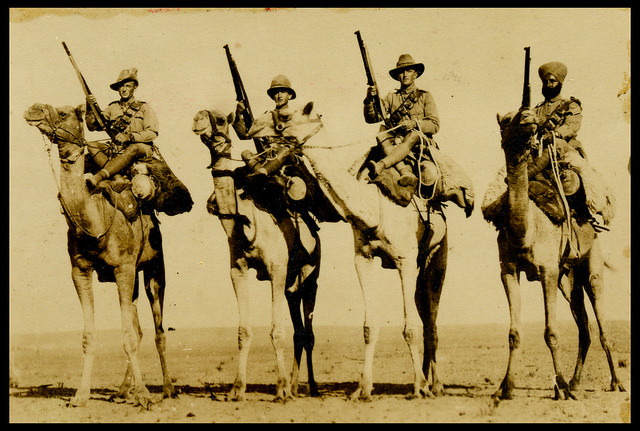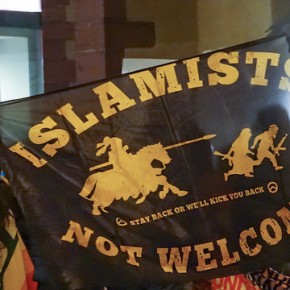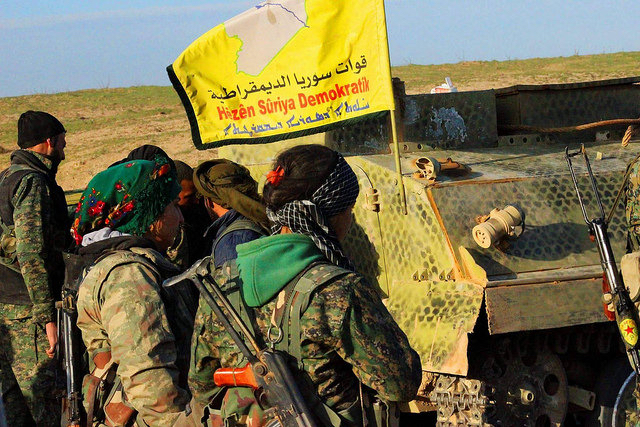The Holy Land has been the scene of war since the dawn of History. Long before Belgium became the cockpit of Europe, Palestine was the cock-pit of the known world. Here, on the high road between Asia and Africa, were fought the great wars of Egyptians and Assyrians, Israelites and Canaanites, Greeks and Romans, Saracens and Crusaders. With these few square miles are associated the names of the world’s greatest soldiers no less than that of the Prince of Peace. None can fail to be interested in the latest campaign in this Land of Armageddon.
The population of Palestine is very mixed, comprising Moslems, Christians and Jews with their various subdivisions and sects. The Moslem inhabitants, Arabs and Syrians, have little in common with the Turks except their religion. The Jews and the Christians groaned under Turkish oppression. Both Jews and Christians welcomed the advent of the British, while the Moslems accepted the situation, if not with pleasure, at least with equanimity. The Turks themselves form no part of the regular population. They are alien rulers, speaking a language unknown to the people, and incapable of understanding the language of the country.
Although Palestine has been governed by Moslems for upwards of a thousand years, it has only been annexed to the Ottoman Empire for four centuries. More than once during that period it would have been torn away but for the aid of the British. The government of Syria by the Ottoman Turk had been oppressive and corrupt and marked by the discouragement of all progress and enterprise. It was high time that it should cease.
Gaza! What pictures this name conjures up in our imagination. From childhood the city has been familiar to us for its dramatic associations with Samson. It was here that he removed the city gates and carried them to the summit of Ali Muntar, “to the top of an hill that is before Hebron,” and it was here that he took hold of the two middle pillars, and, bowing himself with all his might, destroyed the temple of Dagon with the thousands of Philistines that were his tormentors. The whole history of Gaza is steeped in blood. It is the outpost of Africa, the gate of Asia. Throughout the ages its strategic importance has been immense.
Scarcely an invading army has passed here without fighting a battle. It figured in the wars of the Eastern invaders, was totally destroyed by Alexander the Great, was the scene of one of Napoleon’s battles, and, during our campaign, saw six months of trench warfare and no less than three distinct and sanguinary engagements. In the course of its history, Gaza is said to have been taken and destroyed in war between forty and fifty times. No city in the world has been destroyed more often. Happy, indeed is the city that has no history!
But there were other sights that met our eyes, sad and gruesome, that can be better imagined than described. Portions of the enemy’s wire, and of the gentle slopes in front, were littered with the remains of brave lads that had fallen in the sad days of March and April. It was strange that, in their own interests, the Turks had not buried these bodies. Instead they had left them lying there for months, beneath an almost tropical sun, and had actually fixed up their new wire entanglements over the unburied bodies.
In some cases death had evidently been instantaneous. In others, where death had come more slowly, lads were to be found grasping open testaments or letters from home. It seemed so sad that these poor fellows, who had endured the hardships of the Desert and marched victoriously across Sinai, should, like Moses, have been privileged to see, but not to enter, the Promised Land.

Jerusalem, situated away on the hills and far from the main trading and military route, was of but little commercial or strategical importance. Yet we readily understand how its religious value caused it so often to become the goal and prize of contending creeds and armies. Sometimes the motive was religious antagonism, as with Antiochus Epiphanes and Titus; sometimes it was religious devotion, as with the Maccabees and Crusaders. Pitiful though it be, yet, throughout the ages, the City of the Prince of Peace has been associated with the most terrible scenes, the most savage excesses, in the whole dreadful drama of war.
Not once nor twice in the reigns of the Kings of Judah and Israel, did Jerusalem resound with the clash of arms. Although, after the fall of the northern kingdom, it was delivered by divine intervention from the invasion of Sennacherib, yet its submersion by the rising tide of Babylon could not long be averted. The evil day had only been postponed and, in 607 b.c., Jerusalem fell before Nebuchadnezzar, before that power which, like Turkey of yesterday, dominated the whole stretch of country from the Persian Gulf to the border of Egypt. Twenty years later, Jerusalem, with the Temple of Solomon, was destroyed, the city, palaces and temple being levelled in one, and the population were put to death or led away captive to Babylon.
When, some years later, the capital of the Babylonians was captured by the Persians and their empire annexed, the Jews were permitted to return to Jerusalem. In the sixth and fifth centuries b.c. the temple and walls were rebuilt under Ezra and Nehemiah, and Jerusalem took a fresh lease of life as a Jewish city.
Islam arose at Mecca and Medina in barren and uninviting Arabia. When it started on that expansion, whereby it overspread half of the known world, Syria, from its situation, was naturally the first country to tempt its restless and devoted Arab warriors. Within ten years of the Hegira, or commencement of the Mahomedan era, we find the followers of the Prophet already in Syria. The Byzantine army was overwhelmed at the battle of the Yarmuk, and the Arabs laid siege to Jerusalem. The city capitulated to Omar, who granted terms of comparative magnanimity. His terms gave to the Christians security of person and property, safety of their churches, and non-interference on the part of Mahomedans with their religious exercises, houses or institutions.
Upon the site of the Temple, which had been systematically defiled by the Christians out of abhorrence for the Jews, but which was honoured by the Moslems as the spot from which Mahomed ascended to heaven, was now erected the Mosque of Omar. This site became to the Mussulman, the most venerated spot in Jerusalem, as was the Church of the Holy Sepulchre to the Christian. When, in after years, pilgrimages to Mecca were temporarily interrupted, devout Mahomedans made the pilgrimage to Jerusalem instead.
For the next few centuries Christian and Muslim lived together upon a fairly workable basis of toleration. Massacres of Christians and destruction of their churches occurred periodically, either in revenge for Christian successes elsewhere, or in connexion with other Mussulman disorders when mutual assassination was popular. But, on the whole, pilgrims, who at this time swarmed from all over Europe to visit the Holy Places at Jerusalem, were allowed to do so comparatively unmolested—that is, they were probably not robbed more in Palestine than in other professedly Christian countries through which they had to pass along their road. Had the Arab Mussulman remained master of Jerusalem, the Christians of Europe would probably have remained content with the situation.
Prior to the arrival of the British, it was seven centuries since a Christian conqueror had set foot in Jerusalem. But there was now no gloating of the Cross over the Crescent. On the contrary, guards of Moslem troops from our Indian army were placed upon every building sacred to Islam, while Christian guards were mounted over those sacred to Christianity. Never before had Jerusalem fallen into the hands of conquerors so zealous for the safety of its populace or so concerned for the preservation of the city and all that it contained.
Will our campaign be passed down to history as “The Last Crusade”? Presumably not. Throughout the campaign there was little or no religious animosity, except that the Moslem Turk extended no quarter to the Hindoo. To speak of this as a campaign of The Cross against The Crescent is untrue. The Turkish high command was controlled by Germans, so-called Christians. The British soldier fought with no less zest than when opposed to Turks. At the final battle, the Moslems, serving in our armies, by far outnumbered the Christians.
Photographs courtesy of Archives New Zealand and Named From the Past. Adapted from With the British Army in the Holy Land (1919), by Major H.O. Lock. Published under a Creative Commons license.





